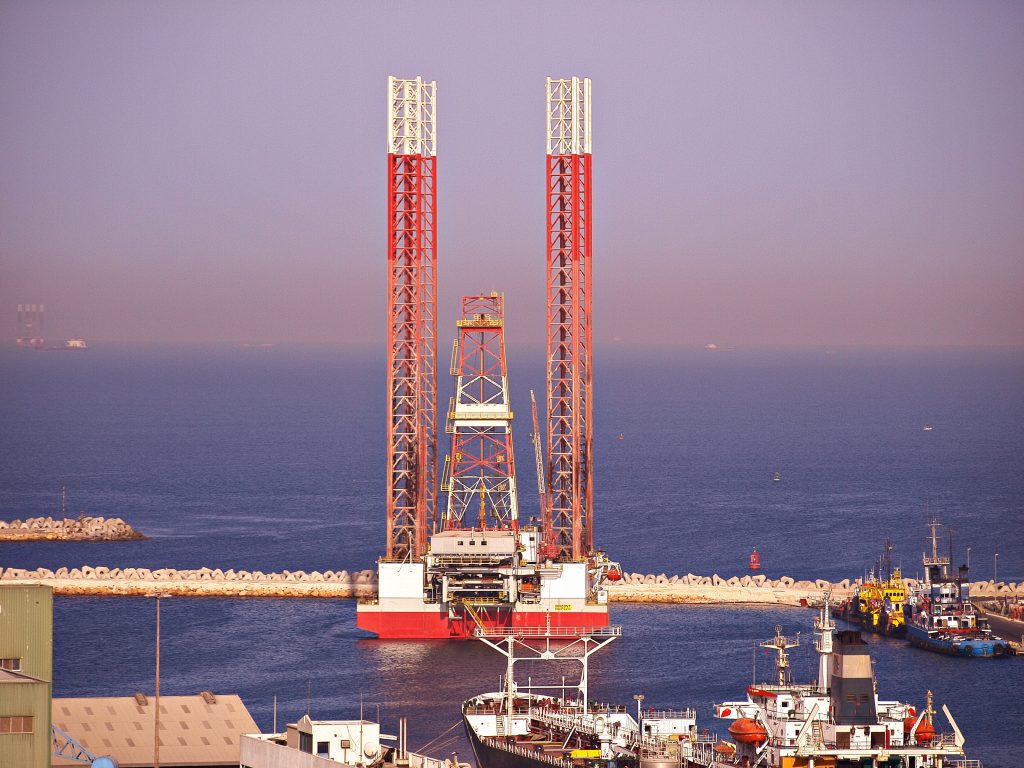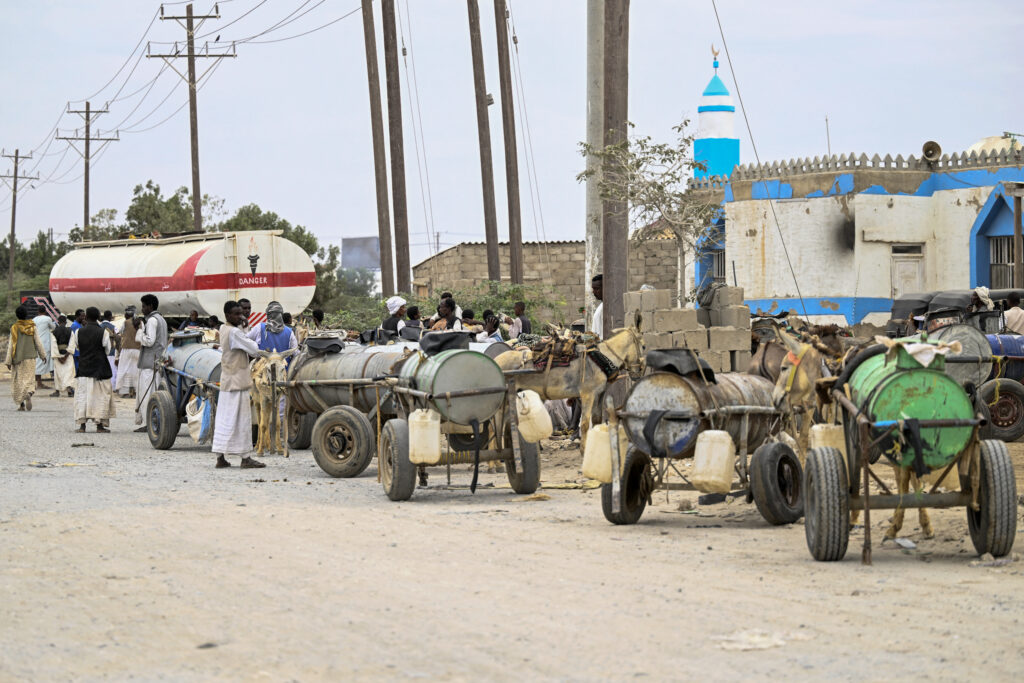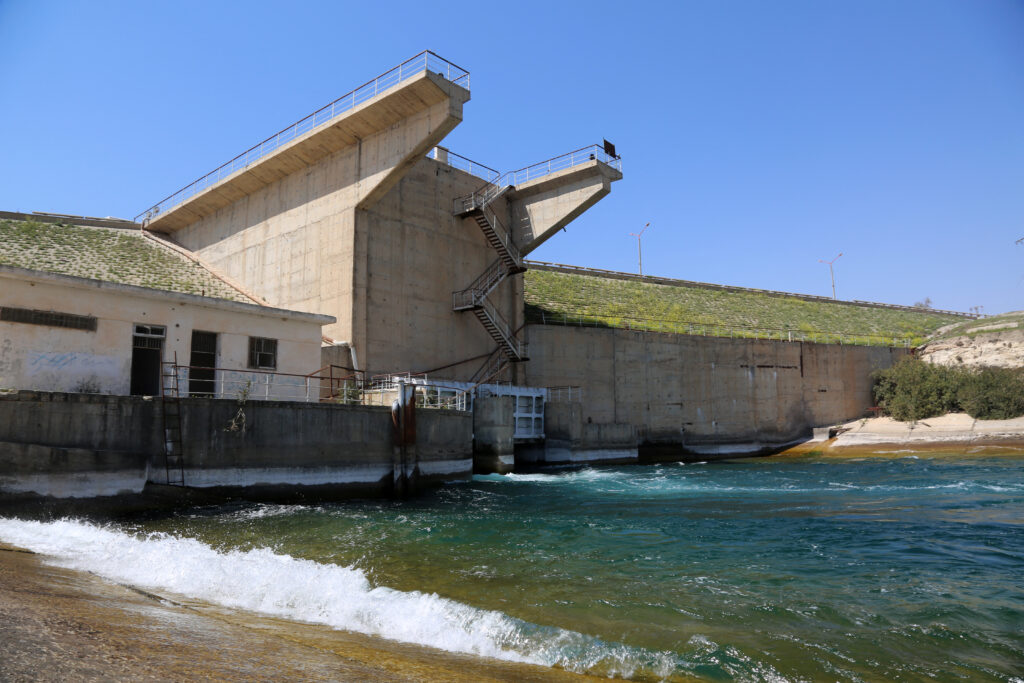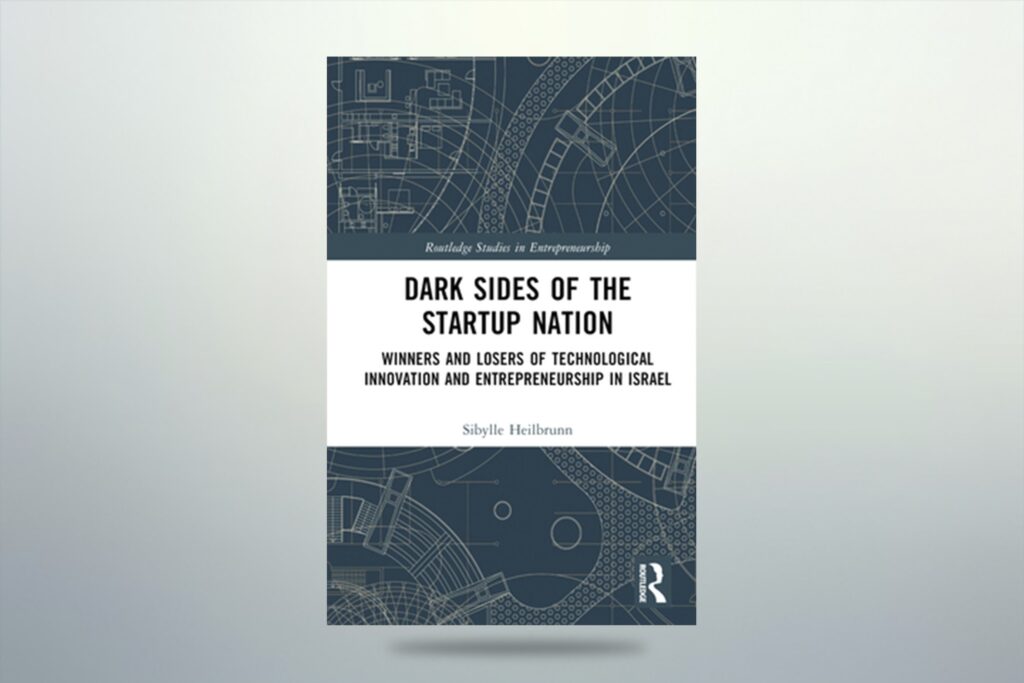Editor’s Introduction:
Invited contributors to this series of Insights were given a broad canvas to draw their views on energy security in the Middle East and Asia, with one essential element forming the backdrop — the emergence of the Covid-19 pandemic, which made 2020 among the most disruptive years in the annals of oil and gas markets. Their articles look at some of the disruptive developments of recent years, including the astonishingly rapid emergence of the United States as the world’s leading oil and gas producer, the role of Asia, in particular China, as leading energy consumers, and the policy focus on renewable energy technologies in several countries in the Middle East. The implications of these developments for notions of geopolitical risk and energy security are the key themes running through the articles in this issue of Insights.
Tilak Doshi leads off with “The Middle East and Energy Geopolitics in an Age of Oil Abundance”. His article is focused on the remarkable rise of the United States as the world’s leading oil and gas producer within a short space of a decade or so. The “fracking revolution” that underlay the emergence of this “age of oil abundance” upended conventional notions of geopolitical risk and energy security by making the United States far less dependent on direct imports of oil from the OPEC countries. It made the United States less vulnerable to the political and social upheavals in the Middle East and yielded the country an enhanced leverage to influence the regional order by supporting allies (such as the moderate Sunni Gulf states and Israel) and sanctioning rivals (such as Iran) without the risk of causing upward oil price shocks on the global economy. This then was the state of affairs on the eve of the Covid-19 pandemic and in the twilight of the Trump administration.
The Biden administration, which took office in January 2021, is committed to “fighting climate change” as the central thrust of its policy agenda across all branches of executive authority, from national defence to foreign relations and industrial and trade policy. The article concludes by observing that the new administration’s efforts to prioritise renewable energy development and constrain US oil and gas production as part of its climate change commitment are likely to unintentionally help Russia, Saudi Arabia and other OPEC oil and gas producers achieve their long-sought common objectives of regaining their leverage over oil and gas markets.
The article by Alessandro Arduino draws attention to a relatively new development in the area of regional security: the proliferation of private security companies (PSCs) to protect energy-producing facilities in the Middle East. From an insurance perspective, PSCs are a key requirement in the management of risk for international companies in the oil and gas industry. This requirement has only intensified in a context of increased domestic instability and regional conflict in the Middle East and North Africa, ranging from Iraq and Syria to Lebanon, Yemen, Somalia and elsewhere. The author highlights the worrying tendency of many foreign PSCs to gear their activity towards the geopolitical agendas pursued by their respective government sponsors. This development blurs the distinction between PSCs and mercenary militias and threatens to further complicate the regional dynamics of military conflict and political diplomacy.
Three articles in this series of Insights — those by Robin Mills, Michael Lynch and Mark Finley — cover the broad concerns related to climate change policy and renewable energy technologies and their implications for energy security and economic diversification. Robin Mills draws attention to the collapse in oil and gas prices in the wake of the Covid-19 pandemic and the market share conflict between Saudi Arabia and Russia. This downward price shock, when global oil prices fell below US$20 per barrel, accelerated the need for economic diversification and exposed the implications of a possible imminent peak in world oil demand for the Middle East energy producers. In this context, the importance of Asia as the largest growth market for oil and gas exported by the Middle East producers was accentuated. The author notes that energy relations between the Middle East and Asia have deepened in recent years beyond the two-way flow in energy and manufactured goods to capital investments in both directions. He suggests that the climate change policies pursued by the United States and the European Union and their geopolitical implications for Middle East-Asia relations will be increasingly important over the coming years. The “green growth” agenda pushed by policy makers in Western Europe and North America may reduce the need for oil and gas imports from producers in the Middle East and is therefore increasingly seen by the latter as a threat to their economic prospects. Mills concludes by observing that there are “no easy answers” for the oil and gas producers in the Middle East oil, long struggling to shed rentier capitalism by diversifying their economies while still depending on gaining market share in energy markets as higher-cost oil and gas producers around the world exit the business.
Michael Lynch, a noted analyst of oil price shocks and a critic of “peak supply” theories of oil production forecasts, suggests that an increasing reliance on solar and wind power may result in trading political risk (of dependence on oil supplies from the Middle East) for operational risks since these new technologies are intermittent and reliant on weather. In the first part of the article, the author gives a useful summary of the history of energy security concerns among policy makers in the United States and United Kingdom as petroleum emerged as a major energy resource at the turn of the 20th century. The oil price shocks of the 1970s, which resulted from the Yom Kippur war and the Iranian revolution, led to energy security policies that focused on alleviating oil supply disruptions by building strategic oil reserves among the OECD countries.
Lynch goes on to question whether the so-called “energy transformation” from the traditional fossil fuels (coal, oil and natural gas) to renewable energy technologies will enhance energy security. He suggests that there is little empirical support to the contention that renewable energy facilities are less vulnerable to weather-related physical disruptions, given that space-intensive wind and solar farms are far harder to protect and repair than larger centralised power systems. He also notes that energy-importing countries would be trading reliance on imported fossil fuels for reliance on the imported equipment and/or minerals needed for renewables. He points to China’s dominating role in the mining and refining of the minerals and rare earths needed for renewable technologies such as the lithium-ion battery. But, unlike other commentators in the field, Lynch is not very concerned about countries’ reliance on Chinese exports of not only minerals and rare earths but also of solar and wind power components in which Chinese firms also dominate. Nevertheless, he notes that the growth of demand for rare earth minerals could mean renewed concentration of supplies in the future, which could prove problematic for energy security policy goals.
Mark Finley’s contribution is perhaps the most systematic one regarding the energy security implications of the transition away from fossil fuels to renewable technologies. Like Lynch, the author notes that newer renewable energy technologies may reduce vulnerabilities to oil supply disruptions. However, they may also introduce new risks to the energy security goals of various countries and regions. Finley proposes an analytical framework that employs the concepts of vulnerability, risk and offsets (i.e., the ability to counter an energy disruption shock) to assess the prospects of the energy transition from fossil fuels to renewable energy. Like Lynch, the author also raises the likelihood of new sources of vulnerability and risk arising from the unprecedented increase in the mining and refining of ores and rare earths, which constitute important components of electric vehicle batteries and other components of wind and solar power. In this regard, Finley is less sanguine than Lynch, noting China’s dominance in the sector. He also raises the issue of mining in less developed countries like the Congo where human rights standards are weak or non-existent. The author concludes by stressing the need to assess the energy security implications of renewable technologies. In particular, he notes the importance of natural gas as the necessary base-load complement to intermittent, weather-dependent solar and wind power sources (which work only when the sun shines and the wind blows). Unlike oil markets, natural gas trade is less extensive and fungible, given the huge costs of liquefying natural gas for sea-borne trade. Finley concludes by calling for more systematic data collection and research for the vital natural gas sector as more countries invest in solar and wind technologies.
The remaining two contributions to this series of Insights, by James M Dorsey and Fabio Indeo, concern the likely path of China’s evolving political and economic roles in Middle East geopolitics. Given China’s energy dependence on, significant investments in, and strategic relationships with various energy-producing countries in the Gulf region, James M. Dorsey suggests that the country’s option to remain aloof from political involvement in the region may not be a sustainable proposition. The author offers a nuanced view of China’s strategic interests in the region, which include maintaining friendly ties simultaneously with state actors in the Gulf that are engaged in a competitive struggle for dominance in the political order of the wider Middle East. From the point of view of the Gulf states, the deteriorating relationship between the United States and China presents them with the difficulty of “walking a fine line” between the two, although it is clear that the latter does not have the capability to play the role of security guarantor in the region for the foreseeable future. Dorsey notes that the US desire to “recalibrate” its involvement in the region as well as the desire by both Iran and Saudi Arabia to reduce tensions between them may act as catalysts for a “new Gulf security architecture”. He suggests that this new architecture could “involve embedding the US defence umbrella, geared to protect the Arab Gulf states against Iran, into a multilateral structure that would include rather than exclude Iran and involve Russia, China and India”. This might seem rather idealistic to some analysts of the Middle East political order, and the author notes that negotiating a new collective security arrangement in the Gulf that includes the major protagonists is likely to be a tedious and tortuous process, if at all possible.
Fabio Indeo focuses on the enhanced cooperation between China and the various Gulf states under the ambit of China’s Belt and Road Initiative (BRI). He covers a range of projects that constitute China’s plans for promoting energy infrastructure and maritime connectivity in the region in addition to the traditional trade and investment links between China and the region. He highlights the increasing convergence of economic and strategic interests between China and different Gulf states as China enhances inter-regional connectivity via energy cooperation and the building of infrastructure (such as ports, railways, industrial parks, logistical services and power plants). Indeo also covers in some detail the increasing number of proposed investment projects by China in Iran across the industrial, infrastructure, defence and transport sectors. He notes that as China increasingly is faced with the need to promote and protect the strategic goals of its BRI in the region, it could be driven to take on a more direct and proactive role in the region’s security arrangements. Such an effort could trigger new tensions in the region as well as with the United States. The author notes that the success of China’s ambitions in the region will depend on its ability to overcome regional rivalries, in particular the hostility between Iran and the Arab Gulf states. More narrowly, Beijing will have to tread carefully to simultaneously preserve relations with Iran and Saudi Arabia, its two main strategic partners in the region.
**********
Since these articles were written in the last quarter of 2020, the key development that has taken shape is the resurgence in global energy demand. Energy demand has rebounded as Covid vaccines roll out, governments ease lockdowns, freight traffic surges and passenger traffic resumes gradually. Global oil consumption is now, in mid-2021, on track to reach pre-Covid levels by the first quarter of next year.[1] The bellwether Brent crude price is now at multiyear highs of around US$75 per barrel, compared to the average price of just under US$42 per barrel for 2020. Natural gas and coal prices also have reached their highest levels in recent years.[2] The Biden administration now faces the supreme irony of pressuring the OPEC+[3] cartel to open its oil taps while continuing in its quest to shut down domestic oil and gas production in the name of “fighting climate change”.[4] The country now has the highest gasoline prices since 2014, threatening the Democratic administration’s already struggling popularity polls and its green and infrastructure spending agendas.
While the Americans and Europeans pay more for oil and natural gas, the Middle East and Russia gain considerable leverage over these markets. But the most important driver of global energy geopolitics goes beyond the self-displacement of the United States as the world’s leading oil and gas producer as the Biden administration focuses on climate change policy priorities and constraining domestic oil and gas production. The momentum of growing energy demand from the developing countries, above all in Asia, has re-emerged as a key determinant of global energy geopolitics. National oil companies in the OPEC+ countries have focused on increasing their oil and gas production capabilities while the Western international oil and gas companies, pressured by activist shareholders and climate change policies, are increasingly turning away from oil and gas investments.[5] In a recent report, the Saudi oil minister pledged to drill for the “last hydrocarbon molecule” and be “the last man standing” in fossil fuel markets, as his country invests in further oil and gas production capacity.[6] Other producers such as Abu Dhabi, Qatar and Russia also continue to invest vast sums in expanding production capacities, unfazed by climate change priorities in the West.
In the West, as the costs of adopting “net zero by 2050” policies mount, there has been increasing evidence of push-back by consumers who can ill afford higher energy prices. Policy makers in Europe and the United States under the Biden administration, convinced by climate models that purportedly predict dire climate conditions decades into the future, seem to be facing the constraints of democracy in their own backyards.[7] For example, the Swiss rejected a climate-protection law in a referendum last month. The referendum results rejected all three parts of the law in separate votes: on CO2, on pesticides and on drinking water. In the United Kingdom, Prime Minister Boris Johnson, facing a backlash from constituents over soaring heating costs with his plans to ban gas boilers in British homes in favour of expensive heat pumps, delayed his government’s plans by five years to 2040.[8] In Europe, the greatest lesson of mass politics against climate change polices supported by metropolitan elites was the gilet jaune protests, which were triggered by fuel taxes. As one observer remarked, “The French love a good riot, but the political backlash to the French government’s plans to increase carbon taxes on fuel could be a harbinger of what’s to come in countries committed to the global warming crusade.”[9]
Tilak Doshi
Visiting Senior Research Fellow
Middle East Institute, NUS
CLICK HERE FOR THE PDF
Image caption: Oil rig being repaired in Port Khaled in Sharjah, UAE, January 2008. Photo by Basil Soufi, Creative Commons 3.0.
End Notes
[1] Irina Slav, “UBS: Oil demand to return to pre-Covid levels by Q1 2022”, OilPrice, 9 July 2021.
[2] Joe Wallace, “Coal prices hit decade high despite efforts to wean the world off carbon”, Wall Street Journal, 25 June 2021; Jessica Jaganathan, “Global LNG-Asian prices rise for second week on strong China demand”, Reuters, 4 June 2021.
[3] In December 2016, several petroleum exporting countries including Russia reached a deal on production limits with OPEC. These countries have since been dubbed the OPEC+.
[4] Tilak Doshi, “Climate change: the West’s energy transition narrative ignores the reality in Asia”, South China Morning Post, 16 July 2021.
[5] Tilak Doshi, “As US and Europe push climate policies, Middle East and Russian state oil producers stand to benefit”, South China Morning Post, 1 July 2021.
[6] Javier Blas, “The Saudi prince of oil prices vows to drill ‘every last molecule’”, Bloomberg News, 21 July 2021.
[7] Tilak Doshi, “Europe’s Expensive Climate Club and Its Detractors”, Forbes, 28 July 2021.
[8] Jack Wright, “Boris Johnson ‘puts ban on new gas boilers back by five years to 2040’ after backlash over soaring heating costs”, Daily Mail, 27 July 2021
[9] Michael Bastasch, “France may be ahead of the curve when it comes to global warming policy backlash”, Daily Caller, 5 December 2018.





